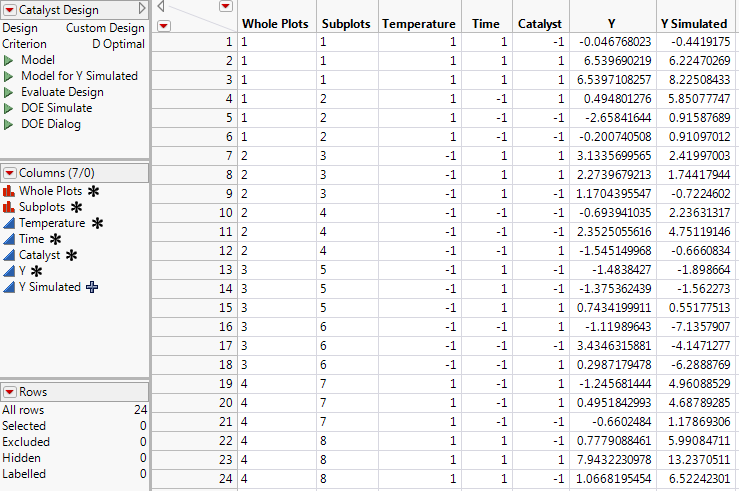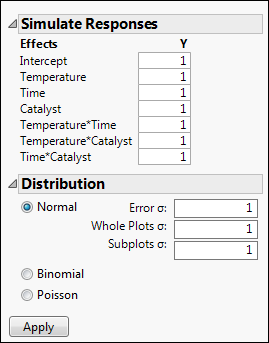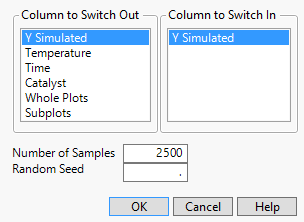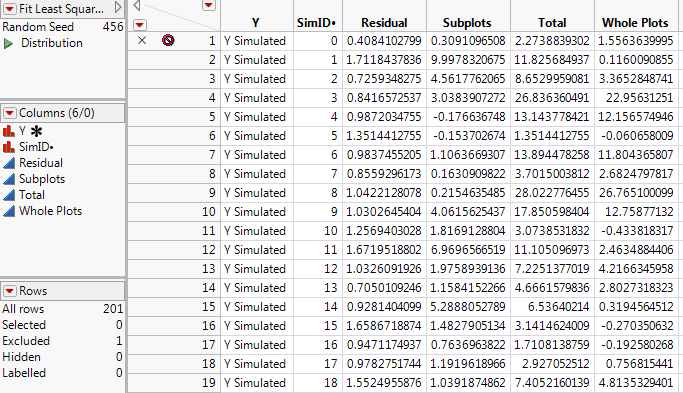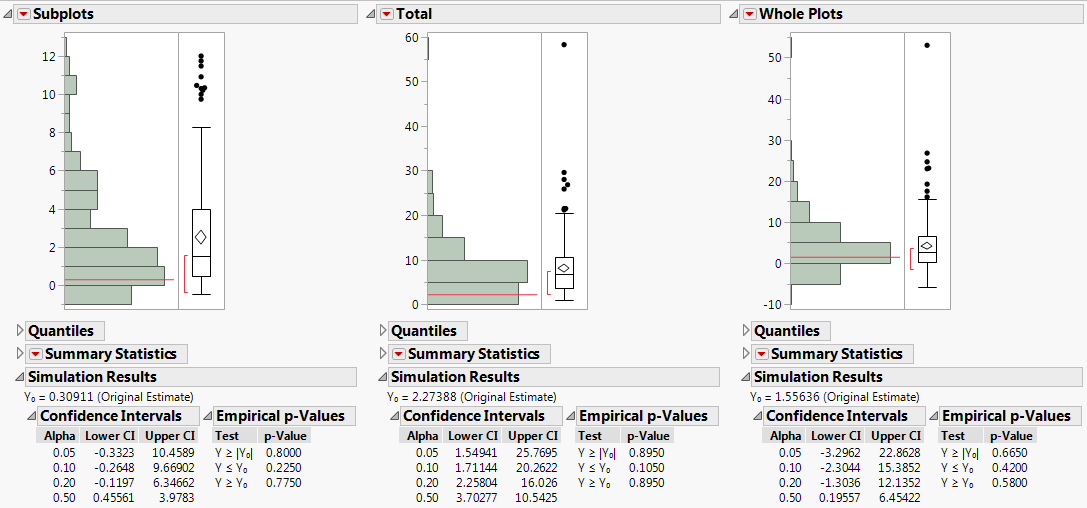In this example, you are interested in the effects of temperature, time, and the amount of catalyst on a reaction. Temperature is a very-hard-to-change variable (whole plot factor), time is hard-to-change (subplot factor), and the amount of catalyst is easy-to-change. For information on whole plot and subplot factors, see Numbers of Whole Plots and Subplots in the Design of Experiments Guide.
|
•
|
If you prefer to skip the steps in this section, select Help > Sample Data Library and open Design Experiment/Catalyst Design.jmp. In the Catalyst Design.jmp data table, click the green triangle next to the DOE Simulate script. Then go to Fit the Model.
|
1.
|
Select DOE > Custom Design.
|
|
2.
|
In the Factors outline, type 3 next to Add N Factors.
|
|
3.
|
Click Add Factor > Continuous.
|
|
4.
|
|
5.
|
This defines Temperature to be a whole plot factor.
|
6.
|
This defines Time to be a subplot factor.
|
7.
|
Click Continue.
|
|
8.
|
In the Model outline, select Interactions > 2nd.
|
|
9.
|
Click the Custom Design red triangle and select Simulate Responses.
|
Note: Setting the Random Seed in step 10 and Number of Starts in step 11 reproduces the exact results shown in this example. In constructing a design on your own, these steps are not necessary.
|
10.
|
(Optional) Click the Custom Design red triangle and select Set Random Seed. Type 12345 and click OK.
|
|
11.
|
(Optional) Click the Custom Design red triangle and select Number of Starts. Type 1000 and click OK.
|
|
12.
|
Click Make Design.
|
|
13.
|
Click Make Table.
|
Note: The entries in your Y and Y Simulated columns will differ from those that appear in Design Table.
The design table and a Simulate Responses window appear. Notice that the design table contains a DOE Simulate script. At any time, you can run this script to specify different parameter values.
|
1.
|
|
2.
|
|
3.
|
Click Apply.
|
In the data table, the formula for Y Simulated updates to reflect your specifications. To view the formula, click on the plus sign to the right of the column name in the Columns panel.
|
4.
|
In the data table, click the green triangle next to the Model script.
|
|
5.
|
|
6.
|
This action replaces Y with a column that contains a simulation formula.
|
7.
|
Click Run.
|
Note: Because the values in Y Simulated are randomly generated, the entries in your report will differ from those that appear in REML Report Showing Wald Confidence Intervals.
|
1.
|
In the REML Variance Components Estimates outline, right-click in the Var Component column and select Simulate.
|
In your simulations, you replace the column Y Simulated, which you used to run your model, with a new instance of the column Y Simulated, which generates a new column of simulated values for each simulation. The column on which you right-clicked and that appears as selected, Var Component, will be simulated for each effect listed in the Parameter Estimates table.
|
2.
|
|
3.
|
(Optional) Next to Random Seed, enter 456.
|
This reproduces the values shown in Table of Simulated Results for Var Component (Partial View), except for the values in row 1.
|
4.
|
Click OK.
|
The entries in your row 1 will differ from those that appear in Table of Simulated Results for Var Component (Partial View).
The first row of the Fit Least Squares Simulate Results (Var Component) data table contains the initial values of Var Component and is excluded. The remaining rows contain simulated values.
|
5.
|
Run the Distribution script.
|
For each variance component, a 95% percent confidence interval is constructed using the 2.5% and 97.5% quantiles (see the Simulation Results report in Distribution Plots for Variance Components (Partial View)). Compare these to the intervals given in the REML report (REML Report Showing Wald Confidence Intervals):


